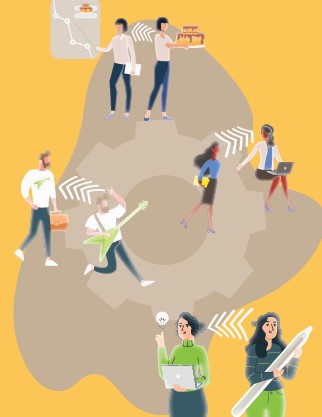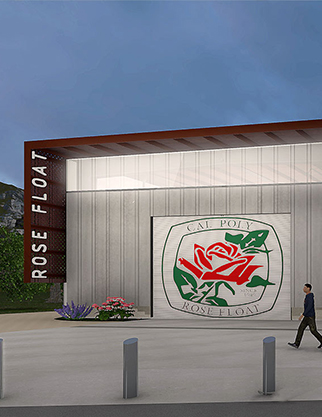For more than a decade, Assistant Professor Claire Latané (’06, master’s in landscape architecture) has designed for mental wellness and safety in schools and everyday environments. History has proven that epidemics such as COVID-19 transform the way buildings and natural environments are designed to meet these disruptions. Outdoor classrooms are at the heart of the National COVID-19 Outdoor Learning Initiative, which includes the Emergency Schoolyard Design Volunteers, a pro bono landscape design assistance program that Latané organized and leads.
Design firms, individual practitioners and students are matched with schools seeking help. The group has more than 250 volunteers — including Cal Poly Pomona landscape architecture students and alumni — spanning 31 states and six countries.
Q: Classrooms went outdoors during the Spanish flu pandemic. What lessons or strategies from this chapter in history did the National COVID-19 Outdoor Learning Initiative adapt for today’s pandemic? What challenges are unique to our current period that require devising a new approach?
A: Many schools around the country took their classes outside or opened classroom windows during the pandemic. National Library of Congress archival photos show “Fresh Air class” with children bundled up in blankets taking naps in cots with the windows wide open during winter in New York.
The pandemic as well as an evolving, more progressive view of what school could be and changed our approach to school design nationally. Instead of grand, three- and four-story buildings, schools were designed as a series of one-story classroom strings or “fingers” separated by courtyards. Each classroom was designed with plenty of windows and clerestory window vents to bring in natural daylight, fresh air and easy access to the lawn right outside.
The big wave of schools built to educate the baby boom in the 1950s followed this approach. If you grew up in a Southern California suburb, chances are you went to an elementary school designed this way. This is an ideal design for students’ and teachers’ physical health as well as mental health. Research shows students have lower heart rates, lower stress and do better academically in classrooms with big windows looking into trees or gardens.
After the 1970s energy crisis passed, many of the country’s architects turned their backs on these nature-based design strategies to embrace the freedom of design that conditioned air seemed to give them. Some classrooms have no windows at all!
Q: What are some of the universal challenges in redesigning outdoor spaces as outdoor classrooms?
A: Most schools, especially schools closer to cities, have very few trees and little to no garden space. What trees or living grass there might be is probably at the front of the school along the street, not where the students spend their time. So, finding places with existing shelter from rain, sun and snow is a challenge.
Even more challenging on these asphalt campuses is providing outdoor learning spaces that support hands-on, sensory-rich activities. This is where we lean on nature-based design and experiential learning, which is challenging within the tight spaces of many schoolyards and the strict policies surrounding school design to ensure safety. As is always the case when designing schools, we have to be hyper-aware of any inherent dangers. We need to make sure they’re safe.
Q: What design considerations does your group take into account as you adapt existing facilities for outdoor learning? For example, Southern California vs. East Coast, or dense urban areas vs. suburbs.
A: One of the main regional considerations is the weather. In the Northeast we’re concerned with providing warmth and protection from snow and rain. In the Southwest we’re more concerned with high heat days and exposure to sun. In rural areas and in wetter climates we might be planning for insects or other animals that could become problematic. In urban areas we need to mitigate noise pollution, air pollution and the heat-absorbing properties of all that asphalt.
Q: In light of the national conversation about racial justice, it won’t come as a surprise to many that our schools can reflect inequities and inequalities. How can design address this?
A: We see that communities that are still impacted by racist lending practices like redlining have schools with fewer trees, less green space and less outdoor space. And across the country, there are many students without access to the technology and resources that they need for remote learning — such as a computer or tablet and a stable internet connection, let alone food security or a place to learn. The National COVID-19 Outdoor Learning Initiative launched in response to this inequity.
Read more: See the Covid-19 Outdoor Learning Initiative’s equity statement at www.greenschoolyards.org/equity.











